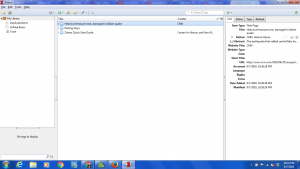
On Wednesday, 9/14/16, me, Drew, Jen, and Kyle met up in the Honors College to go over our Reading Annotations and our Built Environment Descriptions. From my study session on Monday, I felt more comfortable about the Reading Annotations and felt that I was able to give advice and feedback to people who needed it. Each of us had completed at least one Readding Annotation (for class prep Tuesday) and therefore we each had an example of what to show. This was helpful. I liked reading their annotations because they did things differently than I did. I think it is a good idea to include at least two paragraphs in an annotation about a source. Three would be the most, and four is too much, but one-two is definitely good to convey what needs to be said about the source at hand. After we discussed Reading Annotations and gave each other helpful suggestions and feedback we moved on to our next project, the Built Environment Descriptions. It was hard for the others to help me with mine because no one else in the study group was in Group 2. Everyone else began to talk about what they were interested in studying and visiting and I felt like I could really help out. Growing up only about 20 minutes from downtown Atlanta, I have frequented many of the places listed for suggested locations. I was able to tell others in my study group about what the place is like. I explained how for my Beltline location, I was going to study Krog Street Market. To me, Krog Street is amazing and has great restaurants. However, it is overshadowed by Ponce City Market. I’m excited to study Krog Street Market for my Built Environment Description and to shed some light on how great it really is. With this study group, I got good feedback on the Reading Annotation I had completed and also ended up feeling more comfortable about my Built Environment Description and the choices I was making for it.


